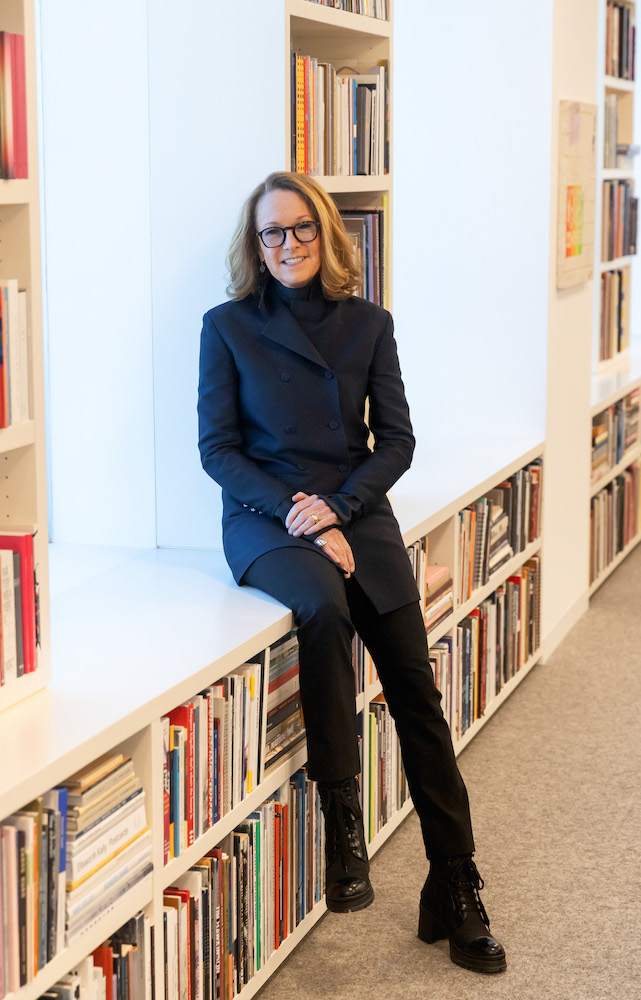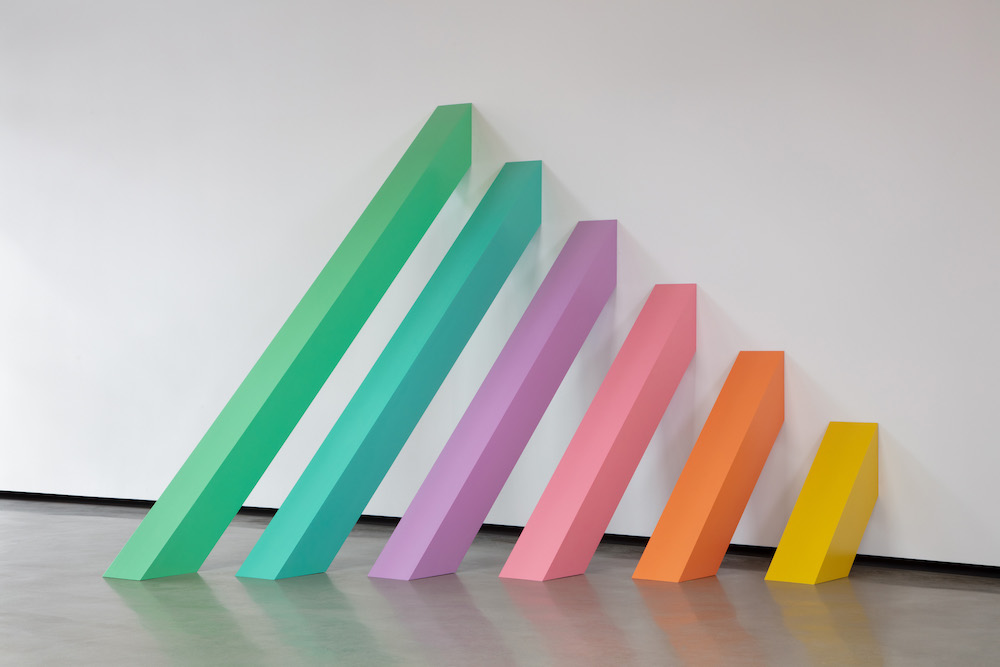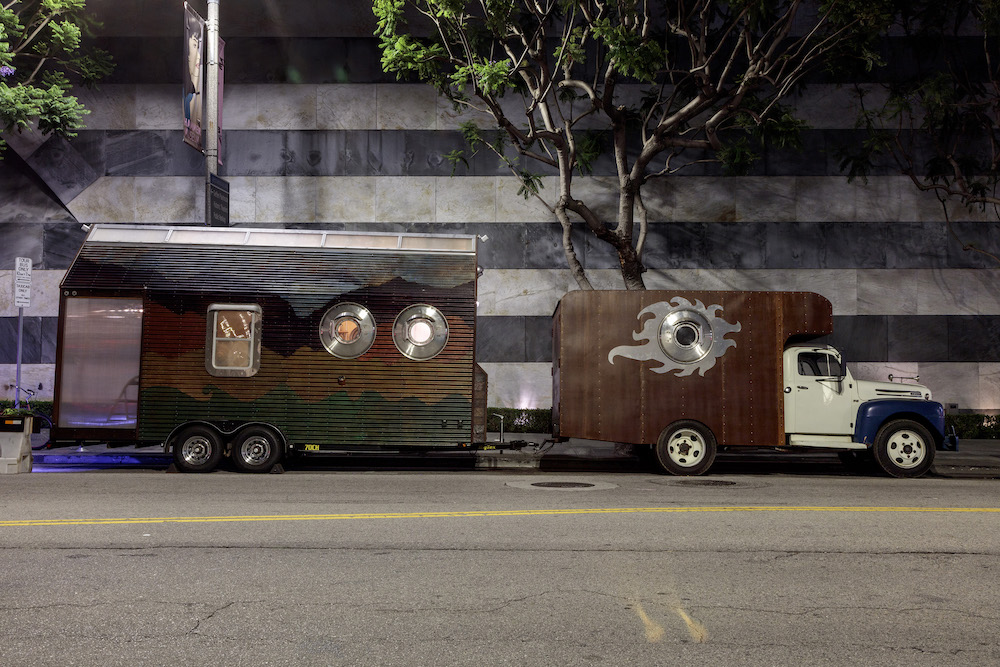Made in L.A. 2023
The Hammer’s “Made in L.A.” just opened (through Dec. 31), and it is now clearly THE art biennial of SoCal. It’s also the best one yet, I think. This year’s theme, “Acts of Living,” allows for a diverse range of work from 39 artists while giving the show some unity. Actually, more unity than usual—I came away feeling that I had really seen a whole exhibition, not just pieces of one.
The show has been adeptly curated by Diana Nawi and Pablo José Ramírez. “Acts of Living” is taken from noted artist Noah Purifoy: “One does not have to be a visual artist to utilize creative potential. Creativity can be an act of living, a way of life, and a formula for doing the right thing.”
One work that most eloquently encapsulates this idea is Dominique Moody’s N.O.M.A.D., a tiny house parked on the street behind the museum. It sits on wheels and features a welcoming porch and round windows which are repurposed washing-machine doors. Moody herself is there much of the time, welcoming visitors and explaining the features of the 150-square-foot dwelling with a cot in one corner and custom-built and found objects throughout. An old photograph of her parents and family appears in a silhouette of a bird in an assemblage piece.

Ann Philbin. Photo: Mark Hanauer.
SO LONG, ANNIE
Shortly after the opening of “Made in L.A.,” the Hammer announced that the indefatigable Ann Philbin will be stepping down as director in November 2024—after 25 years of exceptional leadership that has transformed the museum into a must-see in Los Angeles. When she took over in 1999, arriving from the Drawing Center in New York City, the Hammer was a rather sleepy outpost attached to UCLA. Now it is recognized as a leading, world-class contemporary art museum. Philbin oversaw the presentation of remarkable shows such as Lee Bontecou’s retrospective and
“Now Dig This! Art and Black Los Angeles, 1960–1980,” and also the major expansion and overhaul that culminated this March, designed by Michael Maltzan. The museum added 40,000 square feet of space, including a dedicated gallery for exhibitions of works on paper organized by the Grunwald Center (yes, part of the Hammer!).
On the evening of the “Made in L.A.” opening, Philbin hung out in the galleries—clearly delighted with the show and talking to artists and well-
wishers alike. Now I realize she might have been lingering to enjoy her last biennial as museum director. When she saw me, she called my attention to nearby artists. I was quite taken with the molded-clay wall plaques and sculpture of Akinsanya Kambon; Philbin strongly urged me to talk to him—“his backstory is really amazing,” she noted. And it was. Kambon had been in the armed services during the Vietnam War, then joined the Black Panthers when he returned to the US. His work incorporates West African and African American narratives—there are scenes of colonial and racial oppression, as well as the bonds of family and community.
Thank you, Annie, for championing art and artists, and for creating the space to help them thrive and be seen by a wider audience.

Judy Chicago, Rainbow Pickett, 1965/2021. © Judy Chicago/Artists Rights Society (ARS), New York, Jordan Schnitzer Family Foundation.
NEW YORK REPORT, PLUS BLUM SANS POE
On other fronts in LA, Blum & Poe will be no more—henceforth, it will be known as BLUM. Founding partner Jeff Poe will be stepping down from running one of our leading galleries that now has outposts in New York and Tokyo. Next spring, for their 30th anniversary, they’re opening a new and larger New York space at 9 White Street. That space will be launched with a survey of Japanese art from the 1960s to present, co-curated by Tim Blum and Mika Yoshitake.
Yours Truly was in New York in early October and there were so many shows I wanted to see. It’s interesting how California artists are recognized now. Ruth Asawa and Henry Taylor both had exhibitions at the Whitney, plus there was a major retrospective of Ed Ruscha, full of very familiar work, at the Museum of Modern Art. I found Ruscha’s early work the most compelling because I hadn’t seen much of it. The show will be coming to our very own LACMA in April 2024.
The New Museum presented New York’s first museum survey of Judy Chicago, who started her career in California—getting both her BA and MA from UCLA in the heady ’60s. Along with Rita Koi and Miriam Schapiro, she started the Feminist Art Program at Fresno State College and then
CalArts, and later organized the team that made the landmark installation piece, The Dinner Party, which features table settings for 39 accomplished women from the past that we should all know. “Judy Chicago: Herstory” (through Jan. 14, 2024) includes her early works in Geometric Abstraction, preparatory works for The Dinner Party, as well as her other major series. The surprise addition to all of this is “The City of Ladies” on the 4th floor, which presents works of other women who have influenced and inspired Chicago—art and archival material from the likes of Hilma af Klint, Artemisia Gentileschi, Zora Neale Hurston, Frida Kahlo and Virginia Woolf.
I made it to a handful of galleries—had hoped for more, but getting around in a city jammed with tourists and increasing traffic took time. One of the shows I most wanted to see was Tetsuya Ishida at Gagosian in Chelsea, which features his meticulous paintings. In his works, a young man looking quite like the artist is repeatedly placed in nightmarish conditions—in one, his gigantic body is trapped inside a school building, his head and fingers sticking out; in another, a row of “salarymen” in suits are fed at a lunch counter via electric extruders dangling from the ceiling, held in place by impassive waiters.
These are critiques of a regimented and depersonalized society that values conformity not individualism; technology aids and abets the process. The background is modern Japan, but when I look at these paintings of isolation and dehumanization, I can’t help thinking we are headed down the same path, sadly. The Japanese artist only had a decade of output; he died tragically at a train crossing when he was only 31. Two decades ago, I happened to see his work in Japan for an art fair and met him. Though we could only communicate through his limited English and my limited Japanese, I could sense his feverish dedication to art, to his vision of the world. I’ve never forgotten the work—or the artist.


